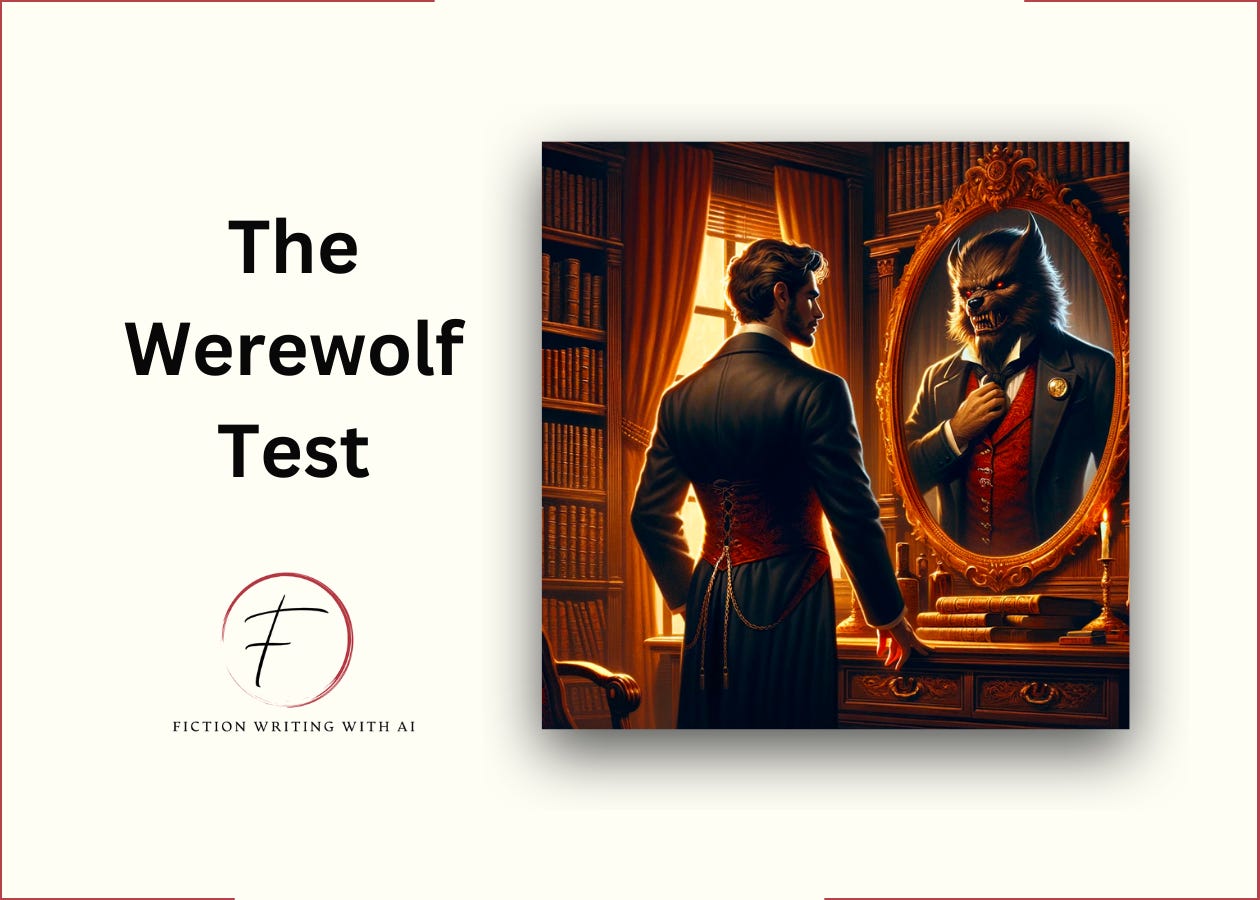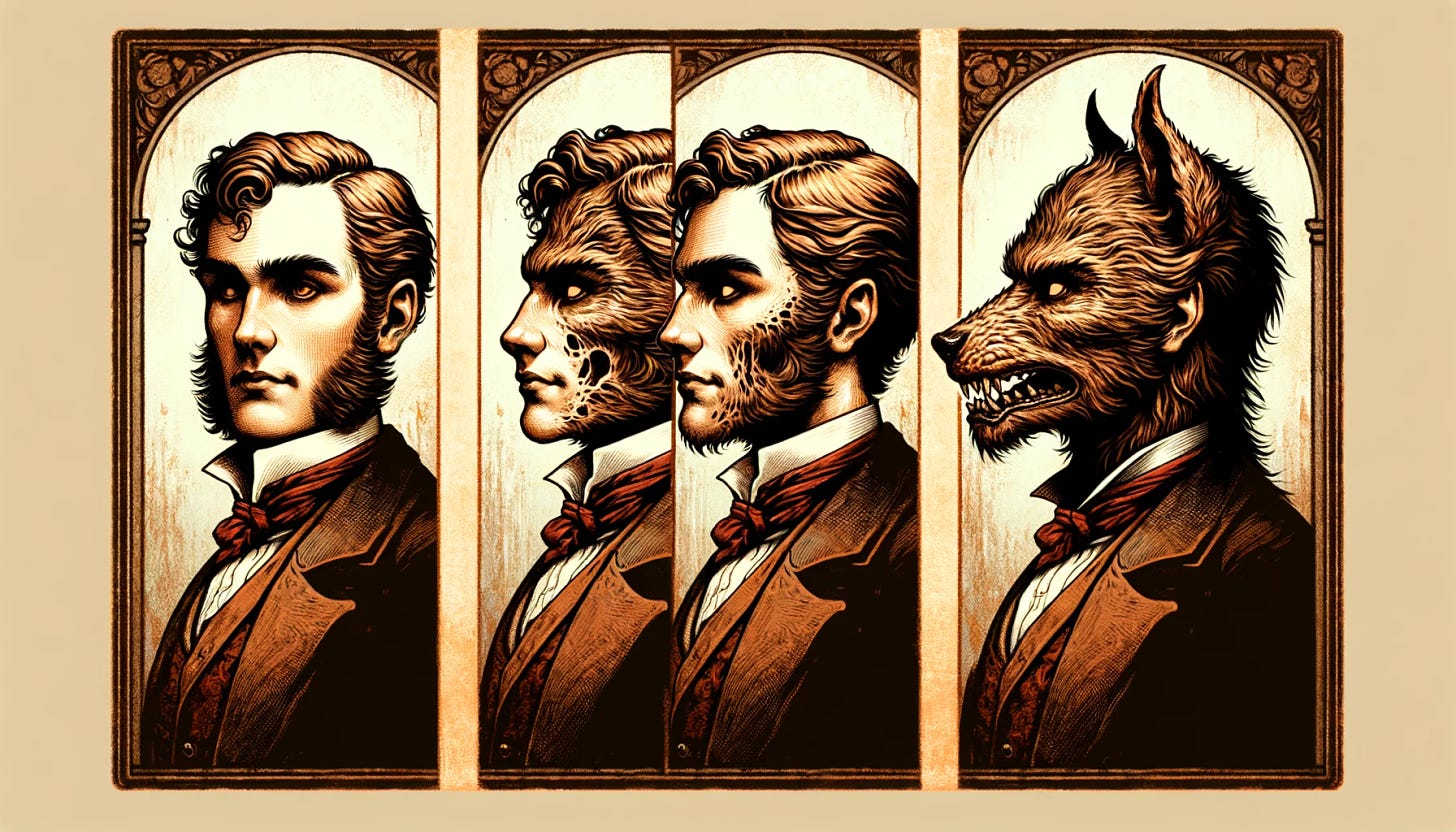The Werewolf Test: How To “Transform” A Story Into $$$ With AI
Hey there!
You are not the main character of your story.
The reader is.
Too often, writers begin the writing process thinking about themselves.
“This is the story I want to tell.”
“This is the way I want to tell it.”
“This is what I think matters.”
And all of that is fine and great, so long as it sits in a larger context that puts the wants and needs of the reader, first.
Because the truth is, it really doesn’t matter if this is the story you want to tell, or the way you want to tell it. What matters is whether this is a story that matters to the reader, and one they can see themselves as the main character in.
“You” are not who matters.
Readers are looking for stories they see themselves within:
The nerdy gamer boy wants to read about a nerdy gamer boy who becomes the hero and “gets the girl” at the end
The semi-popular girl who is bullied by her so-called friends wants to read about a semi-popular girl who is bulled by her so-called friends and gets revenge at the end
The gay guy who grows up in an overly religious community and feels like an outcast wants to read about a gay guy who grows up in an overly religious community, meets someone, and learns to love himself (and confidently confront his judgmental surroundings)
The black girl who goes to a predominantly white college wants to read about a black girl who goes to a predominantly white college, overcomes every obstacle, and emerges powerful, respected, and victorious.
These are cliche examples, but they illustrate the point:
It’s not just the story itself that matters, but what it represents—and whether the reader identifies with the transformation that takes place.
Your job (if you want to get paid to write) is to take the reader on a journey.
And not the journey “you” think is great, but the journey you think they would think is great.
Every character, every scene, every detail, every decision you make should be made in service of the reader’s wants, needs, and desires. Now, if aspects of the story are “also” your story, terrific (timeless writing wisdom is “write what you know”).
But it’s important to acknowledge which one gets priority: the reader’s story, and then your story.
Please sit with this for a while: writers who succeed in selling books use their own story, details, and first-hand knowledge in service of the reader’s story. Whereas writers who struggle to sell books make the mistake of thinking their personal story (nonfiction or fiction) is the main attraction, and expect the reader to sit there and give it their full attention, no question’s asked.
Enter:
The Werewolf Test
What you are marketing is not “your book” or “your story.”
What you’re marketing is your CATEGORY, and the beginning and the end of the transformation.
I call this The Werewolf Test: What’s the transformation you are going to show the reader? “A girl starts out as a normal girl, gets bit in the wilderness by a wolf, and becomes a werewolf!”
That’s a pretty huge transformation!
The main character is transforming, literally: “normal girl” into “werewolf.”
The main character is transforming emotionally: “What will everyone think! I’m hideous!”
The main character is transforming interpersonally: “My friends won’t even recognize me!”
And so on.
In an extreme example like this, it’s easy to see the transformation.
Unfortunately, most people think just because a character breaks up with another character, or a child leaves home, or someone-kisses-someone, that a transformation occurred.
But it didn’t.
These are just things that “happen.”
Just like how the sun rises tomorrow—it “happens.” That doesn’t make it interesting. What grips a reader is watching how characters unfold and change after something happens. So what if a girl falls out of love with her boyfriend? The real question is: how does she become different as a result? Does she now feel free to pursue her dreams? What are her dreams? Is there a point where she regrets her decision and wants to go back to what’s comfortable? If she’s fearless, why is she fearless? Does she find love again? Does she even want to find love? Why or why not?
Notice how these are the details you remember most about stories.
You would never describe a movie, book, or love story to your friend by the title, the trailer, or the ad you saw that introduced you to it. Most readers don’t even remember the name of the author! But they remember the transformation of the main characters. “Jane starts off in this small town, very poor and super insecure—and by the end, she’s living in the big city, rich as can be, the most confident person you’ve ever seen!”
Name The Category + Market The Transformation
Let’s tie this all together.
The winning combination to writing compelling stories is to plant your flag somewhere (it doesn’t matter where in the beginning, just plant it SOMEWHERE), Name your category, and then Claim the transformation you are going to reveal to the reader. (And over time, continue to listen to the data readers are giving you, and move your flag accordingly.)
What you are “marketing” then is NOT your name, your “brand,” or the title of your book. When people say, “You should read Harry Potter,” they aren’t saying, “You should read J.K. Rowling” or “You should read this physical object printed by Bloomsbury Publishing.”
What they’re saying is:
“You should read this transformation from muggle to wizard.”
So, whoever told you the secret to selling lots of books and short stories and making articles go viral on the Internet is to market YOU, your brand, and your “clever title,” fire them.
Readers don’t care about you.
They care about transforming themselves through a story.
SO MARKET THE TRANSFORMATION.
Tell them, as often as possible, “This is where you are. And if you read this, here’s where you will end up.”
Find Your Marketable Transformation With AI
We’ve already talked about how to Create Your Fiction Category.
Now let’s zero in on a marketable transformation. We are going to use AI to brainstorm a list of 7 different transformations for the characters in your story. All you need is a Sub-Genre to get some ideas, but we recommend you bring your Plot-Archetype and premise to the table too—you will get better results (and a few ideas for different characters as well).
Here’s what you need to do:
Step 1: Fill In Your Fiction Category Template
I am are working on a {Sub-Genre} novel with a {Plot-Archetype} plot.
The premise is {Premise}.
For example, here’s how I filled in the template for a Bio-Tech thriller:
Keep reading with a 7-day free trial
Subscribe to Fiction Writing With AI to keep reading this post and get 7 days of free access to the full post archives.





